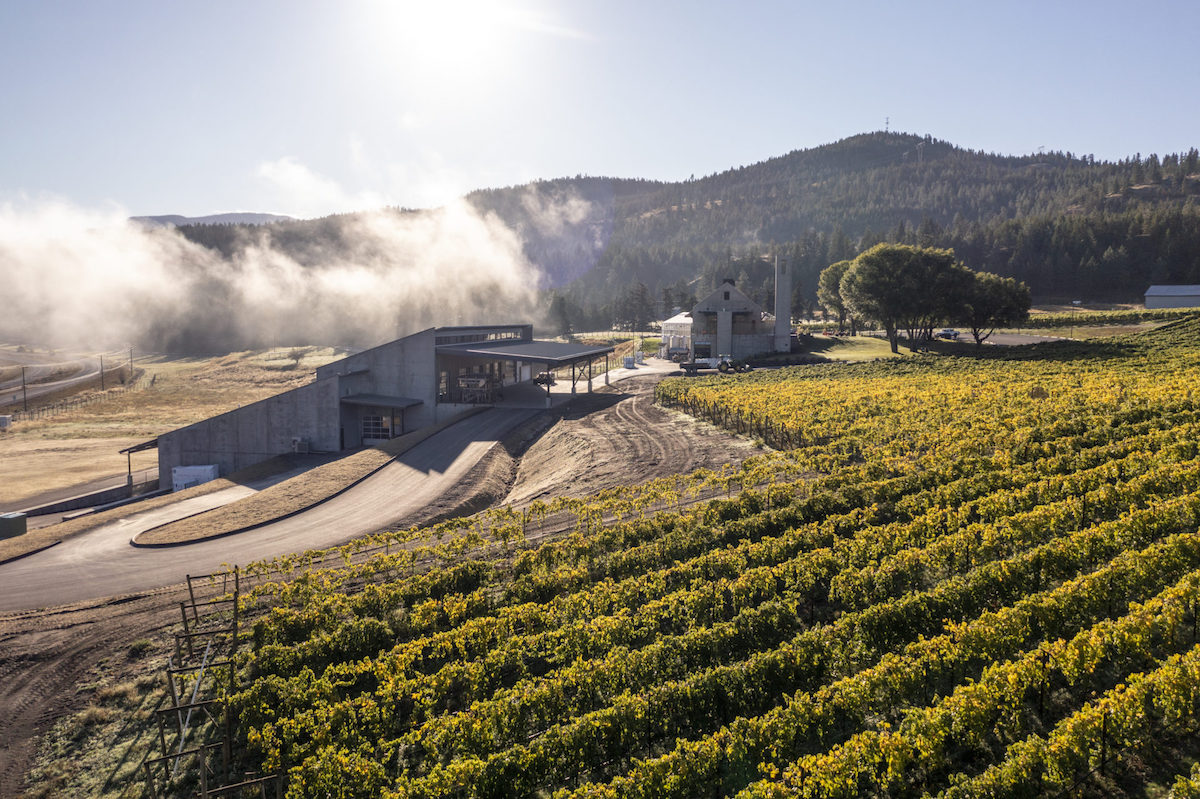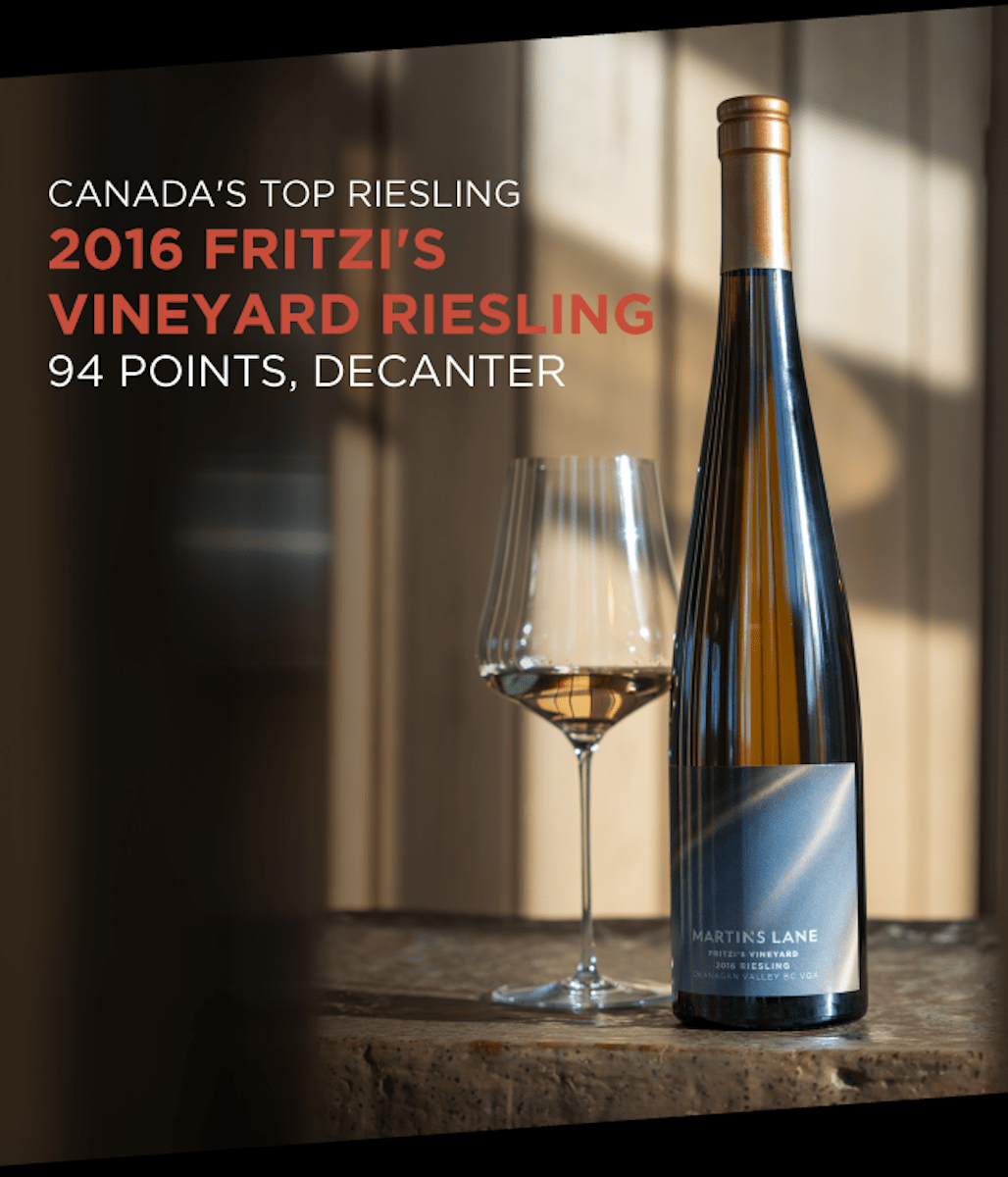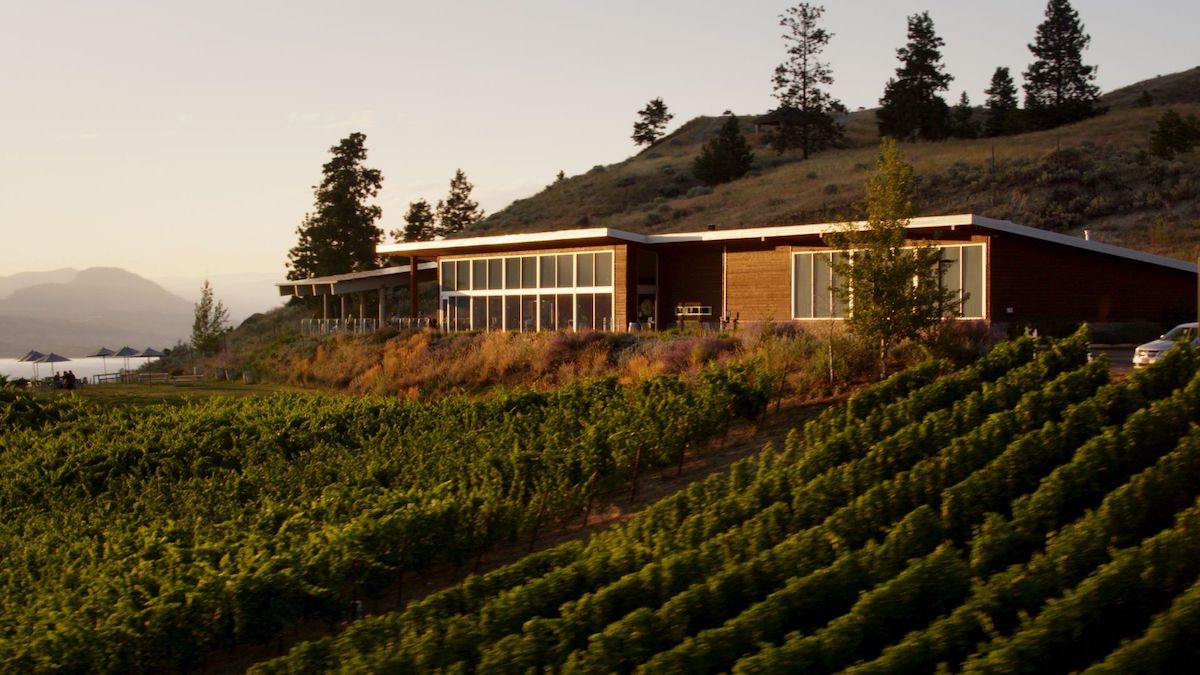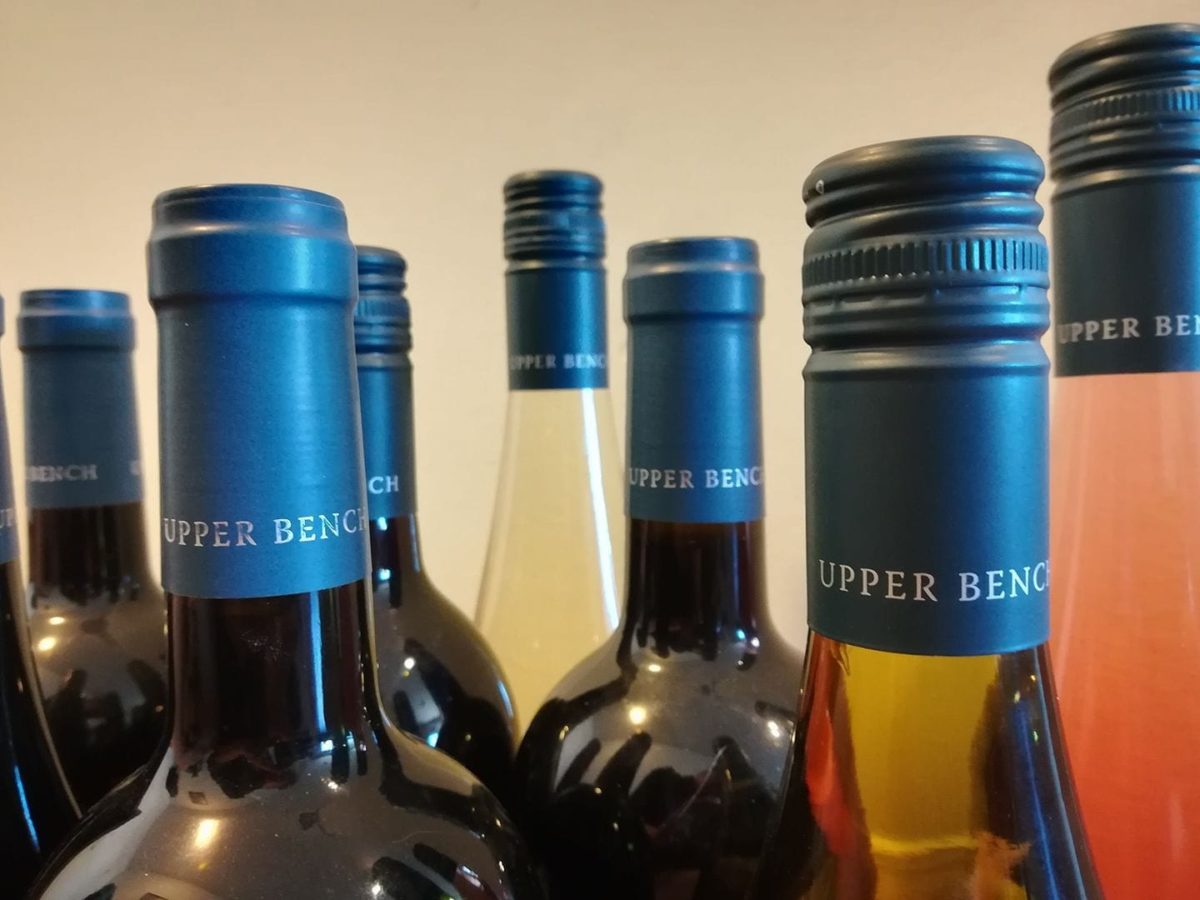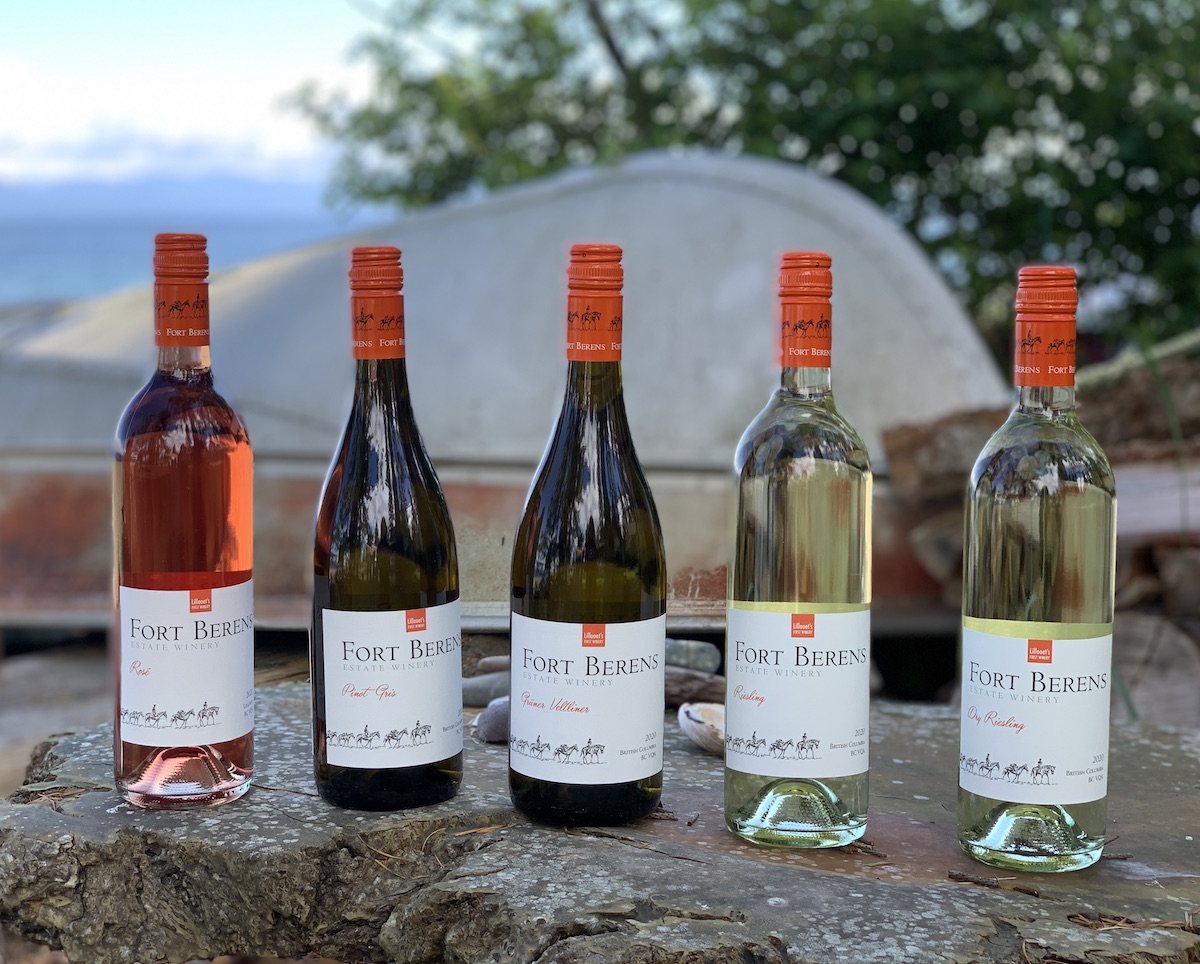Last Thursday I had the opportunity to sit down with Erik Fisher, and, over a glass of wine, chat about his role as the General Manager of Monte Creek Winery.
What is your background and work ezperience?
I left food and beverage and started working for Red Bull energy drink, of all things. it was quite gratuitous because it was right when Red Bull was launching in Canada and to be a part of the launch team for a brand of that magnitude was an excellent experience and definitely posed lots of key learnings.
From there I went to work for Andrew Peller Limited, the largest Canadian owned wine company. I really enjoyed my time there. It’s a great company. I worked in sales and I worked in marketing I moved from the Okanagan to Richmond for a couple of years to work in the head office. Nothing but good things to say about Peller.
Then an opportunity came to me back in 2014, actually at Vancouver International Wine Festival, to help start Monte Creek Winery. At first I didn’t think anything of it because I didn’t have any sort of strong desire at that time to move to Kamloops, we were sort of settled in Kelowna and living in Richmond at this point.
The more I learned about it, and the more I got to know about it, I thought, you know, this is a really interesting opportunity and I think there is a bright future in the Thompson Valley, seeing it was undiscovered.
I think the arrangement of the opportunity was that it was really like clay to kind of shape and mold. Even though it wasn’t my winery I was going to, I was going to be given a lot of autonomy to really help to do what I can for the brand.
With an interest in food and wine, did you pursue an education in the field?
Some WSets, nothing more formal. When it’s a passion you’re generally looking to learn more on a daily basis. It’s something that I am genuinely interested in, so if it’s not forced, you are probably going to be a long learner.
Where do you see Monte Creek in a year, five years or even ten years from now?
This past year we built a brand new 15,000 square foot gravity flow production facility because we were sort of bursting at the seams in our new winery and we’d been planting vineyards to support this growth for a number of years now. Right now we are sort of constrained at about 15,000 cases and this new facility will allow us to make about 45,000 cases a year.
We have some big shoes to grow into. That’s on the sales front and I think we have a number of other goals that aren’t necessarily sale focused.We’ve recently rebranded ourselves in a way that we think really truly reflects our identity both now and where we would like to go in the future.
When we distill it all down and really define what unifies us and gets us out of bed in the morning quality, innovation and sustainability are the three sort of pillars that we feel whole heartedly about and that really unites us.
A number of our goals are sustainability related. We have goals about becoming carbon neutral and goals of working towards being as close to net zero as we can, even if it’s not possible to entirely reach net zero, we probably have some net zero offerings on the property.
We believe in regenerative agriculture and really leaving our imprint on the land leaving a better place than when we inherited it, and we inherited a very special place. it’s 1200 aces that sprawls across the Thompson Valley and a long lineage of ranching and farming. We have on one side of the river it’s 900 acres and we have 55 acres planted in grapes and on the other side of the Thompson River directly across is another 300 acres and we have a 20 acre vineyard over there. We call it Lions Head because there is this undeniable figure in the mountain that looks down over the vineyard. We refer to that as our Lions Head Vineyard.
Have there been any surprises for you in the wine industry?
I think the thing that I’ve found most surprising is just how difficult it is to compete internationally for sure. I know that sometimes people will comment on the price of BC wine, but when you boil down the components that go into producing a high quality bottle of wine in BC, there’s not more left at the end of the day.
What I like about it the most is just how incredibly complex it is. We are always pursuing the perfect wine, the perfect storm if you will, the amount of effort and innovation that we do in the vineyards from an agricultural perspective, and then all of the science involved, in the wine making realm. That’s to get the wine into the bottle, and then the sales and marketing dynamic of selling that bottle of wine.
How big is the Monte Creek Winery team?
Our core team is only about ten people but we grow to over fifty in peak season. We have about twenty seasonal staff in the tasting room and just over 20 seasonal staff in the vineyard.
It’s a very different operation, seasonally.
The soil?
It’s probably, the most unique story about the Thompson Valley because really at the end of the day I think that’s the main point of difference for any grower. In the Thompson Valley, we are full of glacial silt, it’s very mineral rich. The soils are quite calcarious, a lot of that minerality does really show through in wines like our Riesling and our Pinot Noir. I think it’s evident in other producers in the Thompson Valley as well, like Harper’s Trail, and you really identify with that minerality. I think the soils are prized, I think it is one of the attributes that we really have going for us.
We are also developing a site in Keremeos. We have 40 acres planted there now, so far. We did a lot of study on that site, dug a lot of pits. They are five very distinct soil types in a 90 acre site whereas in the Thompson Valley we’re basically like the bottom of the ancient glacial lake, it’s meters and meters of that glacial silt.
Terroir. That’s why I think it’s so interesting and the one big point of difference for different wineries is the dirt.
What kind of yields?
Right now we have areas with different ages of vines, the age of the vines, we also experience quite a bit of winter injuries so we have vines that are coming back and we are not pushing very hard.
Our overall number is only about 2.5 tons to the acre. We don’t push for very high yields, we are trying to make as premium a wine as we can. The more concentration we can get in the fruit versus in the vine or versus overcropping, where you might end up with diluted concentration. We are really careful with our yields.
Tell me about the winemaking.
We are trying to hang our hat on Riesling, Chardonnay and Pinot Noir. Those are the three most prominent in our portfolio.
Most of our whites follow more of a fresh and acid driven crisp, refreshing style. In the Thompson Valley we have, well everywhere in BC has a temperature change, but, without the lake being so moderating, as it is in the Okanagan, we have these incredible swings where we are often the hottest part of the Province in the summer, without any clouds in the sky. We preserve a lot of natural acidity in our wine.
We’re quite experimental, we are using concrete, we’re using sandstone, we have clay amphorous, predominately, like something like our Chardonnay for example, this past year. At times we will do about 25% in concrete and the rest in French oak, that’s 75% in French oak maybe 20% of that is brand new. We’ll do a little bit of malolactic fermentation on the new oak, integrated. We’ll age all the Chardonnay in the barrels sur lee. There is a lot of natural acidity, they are fresh, crisp bodies that is the backbone of our style to make more racy, exciting, refreshing wines.
Are you using a gravity feed process?
For our reds it will be, and our whites will continue to be made in our original facility. Pumps can be hard on some of the fruits like Pinot Noir and Gamay, we can produce them, we think that they are areas where we can make more premium wines by not feeding them in the pumps.
Do you try different barreling?
Our winemaker Galen, he has a bachelor of science in addition to his wine making degree, and he is still in school and he will never stop learning and experimenting, and I love it because we have six or seven shred projects going on right now and always trying new, like at harvest it’s common for us to have a burst of sixty ferments going at a time and just to identify the uniqueness of those individual batches of fruit ,but often you will do a lot of native yeasts and natural ferments but we’re generally doing an experiment, and whether it is because we’re planting in the dirt vessel we may try different technics to try and evolve and push quality
Is Monte Creek Winery natural, organic, bio-dynamic?
We practice what is called regenerative agriculture, we’re very focused on making sure that our soils are healthy and diverse. In order to make quality wines you have to have balanced vines and in order to have balanced vines you have to have soils that are truly alive. We do a lot of cover crop, we do a lot of compost. We are starting to trial things like compost tea. On the regenerative side we are starting to trial producing our own biochar mostly to help sequester more carbon. We’ve been farming organically for three years, we’re actually going to certify this year in 2022.
We do some bio-dynamic practices, for example we have chicken tractors. The chickens are in there to eat the cut worms, to scratch up the soil, and they add a little bit of fertilizer. We’re not broad strokes like bio-dynamic, we have activities here and there, but we are more on the regenerative side and making sure that the soils are as healthy and alive as they can be.
We are just always looking for ways to be as natural and regenerative as possible, the fewer chemicals we need to use the better in our minds.
You have probably the most extreme seasonal temperature changes, how do you deal with that?
There are temperature extremes. In the summer we deal with that quite well We have summers where we swing 20 degrees in a night.
In the summer we deal with it quite well since we may have to adjust the canopy to ensure that we don’t incur sunburn on the grapes because it is so hot. We have to be diligent with our irrigation system so we’re not stressing the vines when we don’t want to. Early on in their life cycle, blooming and flowering, making sure they are well hydrated. In the winter, because we are a little bit colder than the Okanagan, we do a technique called hilling up where we actually bury the bottom, the trunk of the vine. We are starting to experiment with something called a geo-textile, essentially it is like a blanket for the vine, and it keeps it warmer than it would without and more effective than hilling up.
We are very dry and arid so we have very little disease pressures so we are not really concerned with adding humidity in the canopy because we use very little sprays as it is. We have actually been working with a local dairy for spraying milk to prevent powdery mildew which leaves even less stress on the land. This is milk that is lab tested milk that would otherwise be discarded that we are able to reuse and repurpose in the vineyard. We have been doing some trials in the block that we have been doing it and it has been quite effective so far. It is basically to prevent powdery mildew instead of spraying a chemical, it’s essentially taking a natural product instead of a chemically enhanced product.
Have you been impacted by climate change?
We do, in wine years we are still relatively new and I don’t know if there is such a thing as normal anymore but what would a normal growing season be? I mean lately they have come on super strong we’ve been getting these gang buster starts where bud breaks have been really early and things have been really progressing fast, but the extreme heats have been slowing things down, the wild fires have been slowing things down. I’m not sure what normal is and how much of it is climate change versus how much of it is just cyclical but it’s significant.
Us and Lytton were going back and forth last summer as the hottest part of the province. I don’t remember the exact number but I feel like it didn’t get to 50 but it could have been 49, it was hot! The air was so hot.
The entire month of August there was just an orange dot in the sky, apparently it was beautiful everyday but you couldn’t see it in the sky. We were full on evacuated at the winery in 2021, I don’t know if we were the only winery to get evacuated but we were evacuated. I was evacuated from my house, twice in 2021. It was tough.
The grape vines will essentially go into remission but we definitely notice it in the berry cluster size, there were a lot smaller berries than normal and we think it was heat related. Really concentrated fruit with smaller than normal berries and we think that was heat dome related. I mean I had never even heard of a heat dome, so there’s two terms I learned that I didn’t know about “atmospheric rivers” and “heat domes”. I just never heard that before and then all of a sudden they were household terms.
What are your next goals?
Most of our goals are to continue to grow better fruit and continue to operate more sustainably. Becoming carbon neutral is high on our list, trying to become as low input as we can is high on our list as well.Tricky with the global supply chain.
That concludes my interview with Erik Fisher. Thanks to Town Hall Brands for arranging this opportunity.
Erik Fisher
General Manager
Monte Creek Ranch Winery
August 2014
Director
Wine Growers Canada
Jul 2017 – Sep 2021
Chair
British Columbia Wine Institute
Jul 2015 – Sep 2021
Director
Thompson Okanagan Tourism Association (TOTA)
Nov 2015 – Nov 2020
Source: LinkedIn
Thank you to Erik Fisher for taking the time to chat with me, and thank you for the bottle of Monte Creek Riesling.

